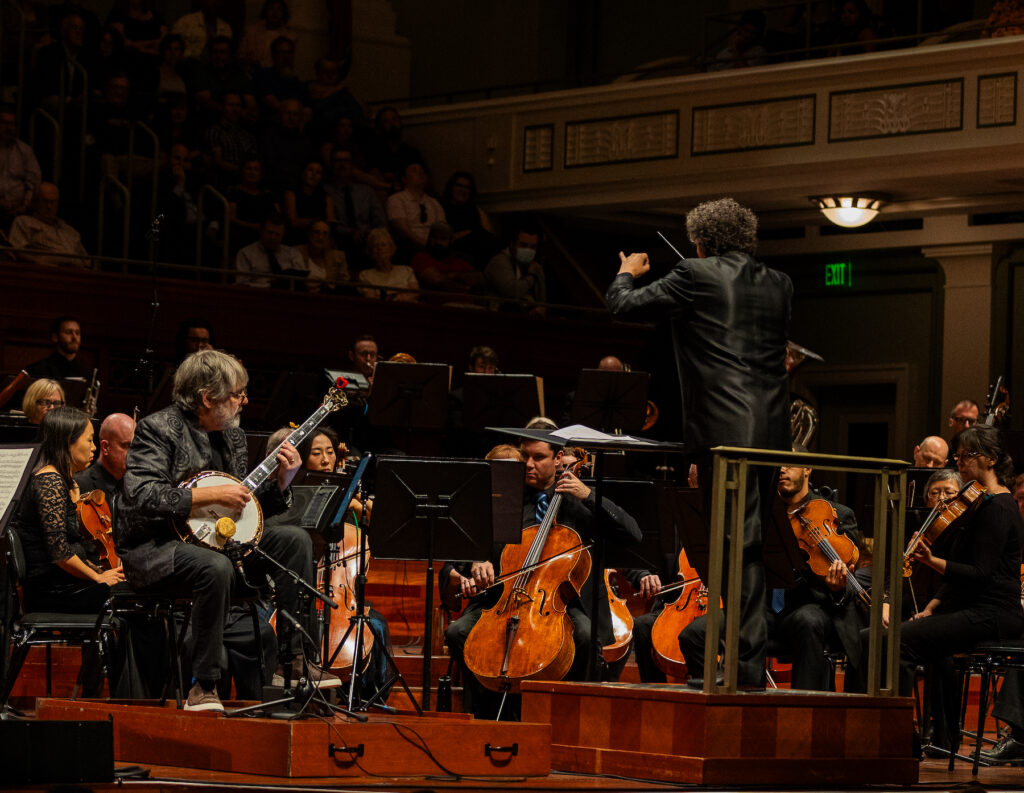
A beloved piece of American music is turning 100 years old this season. But it nearly didn’t get composed. And when it premiered, George Gershwin’s “Rhapsody in Blue” was largely a failed experiment.
These days, the work may not need a defender. But I am here for the job anyway.
“Rhapsody in Blue” may seem like an old favorite by today’s standards, but it’s still being reinvented and reimagined all the time. The Nashville Symphony just performed it with banjo virtuoso Bela Fleck in the solo role, and they’ll play it two more times this season, in different versions.
It’s all part of celebrating the work’s century of influence.
A heated beginning
It was on Feb. 12, 1924, that an audience packed New York’s Aeolian Hall for “An Experiment in American Music.” The concert had 26 planned parts, and the ventilation system in the hall was malfunctioning, so the audience nearly left due to the heat.
But they had come to see a jazz concerto by tin pan alley song plugger George Gershwin.
One other problem: Gershwin had forgotten he was supposed to write a concerto until just two weeks before, when he saw the concert’s ad in The New York Tribune. He had been busy working on his first musical, and had to move quickly. So the piece itself was still half-baked.
The iconic opening clarinet glissando was only done as a joke during the dress rehearsal. Gershwin had not yet actually even written down the solo piano part. He made it up live in the concert.
“Rhapsody in Blue” was an audience hit, with its first recording selling over a million copies — a huge number for the time.
Marketable? Clearly.
Experimental? You bet.
Successful? Depends who you ask.
Reception among critics has always been mixed. The same Tribune that had announced the concert called it “trite, feeble, and conventional.” Leonard Bernstein described it as “not a real composition,” saying it could be too easily cut down and reshaped without losing its integrity. The racial politics of combining classical music and jazz in the 1920s (and doing so via an all-white program of composers) shouldn’t be ignored either.
Bandleader Paul Whiteman had wanted to showcase jazz as “respectable.” What Gershwin knew instinctively was that jazz was already beloved by audiences. And what other respect is needed for a genre of music? Instead he drew classical toward jazz — pulling in generations of new listeners.
Proving the hypothesis
In all of my study of the history of western music, I have rarely found that a performance of a beloved old piece of repertoire changes the world. Rather it is when chances get taken, risks are allowed, and someone in the room says “this might not work” that minds are blown and our sound world is forever altered.
 Courtesy Dokk Savage Photography For the Nashville Symphony
Courtesy Dokk Savage Photography For the Nashville SymphonyBela Fleck performs “Rhapsody in Blue” with the Nashville Symphony.
This year as the music world celebrates the centennial of one of those landmark pieces, I hope that orchestras see the experiment for what it once was. That they go beyond thoughts of milestones and anniversaries, because “Rhapsody in Blue” is not about looking backwards.
It’s about stepping into the musical unknown, and I hope that we are all inspired to do the same.

